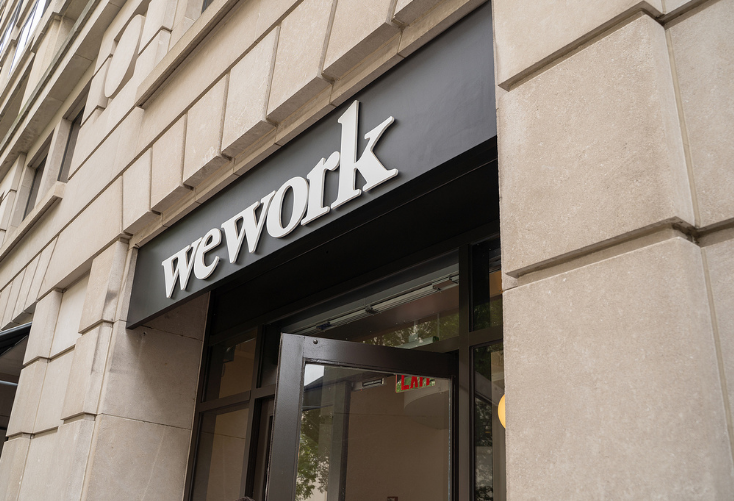Hand selected flexible workspace news from the most reliable sources to keep you ahead of the pack. We find all the latest news, so you don’t have to. Morning and afternoon updates. Stay in the know.
Here’s what you need to know today:
- Ensuring The Mental Health Of Remote Employees NEW
- Flexible Office Operators Struggle To Stay Afloat NEW
- Demand For Physical Workspaces Is Evolving NEW
- Could WeWork Make A Full Rebound?
- Is Remote Working Right For Your Company?
- How Remote Working Will Evolve In The Future
Ensuring The Mental Health Of Remote Employees
There seems to be a glimmer of hope at the end of the pandemic tunnel as vaccines are being distributed worldwide. However, the threat of COVID-19 is still at large.
Knowing this, it is clear that companies must continue to allow their employees to work from home until it is safe to come back into the office.
A survey conducted by Mireia Las Heras, Professor of Managing People in Organizations at IESE Business School, found that women suffered 20% more than men as far as mental fatigue goes. So how can businesses support their remote workers until then?
Business leaders should ensure that their employees are taken care of by encouraging them to take time off from work and set distinct boundaries between their work and home lives.
If they do not take these measures, workers can suffer from burnout and other mental health problems.
Being there for employees will also be crucial to nurturing a healthy work environment. Offering an empathetic ear allows workers to know that they are being supported throughout these unprecedented times.
Flexibility will continue to be a key component of a proper employee experience. Giving them the freedom to choose when they work allows them to achieve a better work-life balance. It also shows that business leaders trust their workers, which leads to higher job satisfaction.
The benefits of remote working don’t only impact employees — businesses can also gain their own perks such as cutting down on overhead costs, opting out of risky long-term leases and see increased productivity.

Flexible Office Operators Struggle To Stay Afloat
Despite the coworking industry holding up relatively well throughout the pandemic, some operators have taken big hits.
For instance, IWG is looking to take control of rival Argyll Club, which recently went into administration. IWG bought into the £278 million of debt taken out by Argyll Club, which has 38 locations in London.
Last week, CEO Jean-Michel Orieux left Argyll and restructuring expert Nicholas Pike was appointed to the firm’s board.
Earlier this year, IWG raised £320 million and took out £300 million to put towards acquiring rivals.
Serendipity Labs is looking to restructure its business through a Chapter 11 bankruptcy after failing to refinance its debt. Last week, the company let go of the majority of its staff and revealed it would be closing all of its locations in an effort to transition to an online flexible workspace operator.
Additionally, MSO Workspace, which has locations outside of London, Birmingman, Manchester and Northampton, recently went into administration as well.

Demand For Physical Workspaces Is Evolving
The sentiment towards office spaces has been drastically altered over the last nine months. Now, the adoption of flexible offices will play a significant role in corporations’ real estate portfolio.
While working from home has been the ideal solution to curbing the spread of COVID-19, employees are increasingly demanding some type of flexibility as a permanent work solution.
Flexible offices allow companies to reap the benefits of remote working arrangements, while also providing employees a place for in-person collaboration and interactions with their colleagues in order to better nurture relationships and brainstorm.
Using these spaces can also help prevent the potential increase of loneliness and isolation that can come with working from home.
Making this transition will require companies to completely revamp their real estate needs. Moving forward, the office will play a more purposeful part of a company’s operations. For instance, instead of being a space used for all work-related projects, it will instead be an environment where colleagues can meet, collaborate and hone in on creativity a few days out of the week.
Along with this rejuvenated view of the office will likely be the emergence of a hybrid work arrangement. Combining traditional and flexible real estate allows employees to embrace the benefits of in-office and at-home work, while companies can minimize the risk that comes with taking up short-term leases.
Demand for virtual offices has also climbed over the past year, namely from smaller companies who have given up office space, as well as those who are operating remotely.

Could WeWork Make A Full Rebound?
Despite WeWork going through one of the most publicized implosions last year, the company has shockingly gotten on track to profitability and an IPO post-pandemic.
WeWork offices were once known for rowdy parties led by CEO and founder Adam Neumann. Neumann himself was known for lavish spending and delving into businesses outside of the office industry. This led to accusations of sexual harassment, drug use and a “frat-like” workplace culture.
After Neuman was forced to step down and Sandeep Mathrani took over as CEO, the company got rid of the excess amenities, businesses and acquisitions it accumulated over the years. It then shifted its focus onto cutting costs and redefining its toxic company culture.
Despite the coworking operator’s poor reputation, its resiliency throughout the pandemic has set it up to emerge from the pandemic stronger than ever.
Ready-to-use flexible offices have become a potential solution for companies looking to cut costs and short-term leases, without sacrificing the benefits of a physical workplace.
“We believe, based on our data and history, that flex is going to be a very viable alternative when interest in office space rebounds,” said Julie Whelan, Global Head of Occupier Research at commercial real estate firm CBRE. “It will come out of this stronger than it went in.”
Adopting flexible offices has been ideal for companies rethinking their operational strategies for the future, particularly those who are looking towards a hybrid or remote work model.
By including these workspaces as part of their new work arrangements, companies are able to meet the demands for workers, without putting them at risk.

Is Remote Working Right For Your Company?
Remote working has become a necessary part of our everyday lives as the pandemic continues to threaten the health and safety of everyone.
This mass adoption has led business leaders to rethink their operational strategies for the future, and apply what has worked well over the last several months.
However, opinions on working from home are divided among leaders. For instance, Apple CEO Tim Cook has expressed reservations about remote working, but Amazon and Facebook are considering hybrid work arrangements for the future.
There are, of course, pros and cons to working from home. Some companies have noted a drop in productivity and less engagement when their employees are working from home.
However, a study based in Mexico found that 72% of respondents felt they had a “high or very high level of productivity.”
These findings indicate that it’s possible that CEOs simply do not want to lose control over how their employees work.
Still, many workers have expressed the desire to come back into the office at least part of the week. Having the ability to work from home when they need helps them achieve a healthier work-life balance and eliminates stressful commutes.
But some professionals have expressed missing the social interaction of offices, or may not have the resources to get their work done appropriately at home.
When making the decision for which arrangement works best for your company, gather feedback from employees to gain a better understanding of what they need to be as efficient as possible.

How Remote Working Will Evolve In The Future
With the mass adoption of remote working this year, companies have been able to identify what and what doesn’t work for their business. So what can we expect to change in the coming years when it comes to this arrangement?
According to Fiona Camenzuli, people and organization leader at PwC, companies will need to find a healthy balance between technology and leadership. Utilizing these advancements to improve the overall employee experience will be critical in nurturing a healthy distributed work environment.
Additionally, companies should look into switching mobile device management if they are not being provided the appropriate support.
“Technology held up and there were reports of increased productivity, agility and collaboration,” said Camenzuli. “However, as the days have shortened and restrictions have worn on, the pandemic has taken its toll on mental health and ‘the magic’ of collaboration has seemed ever harder to find.”
Companies who opt for a more distributed workforce will also likely look towards hiring freelancers who are paid on a per-gig basis, rather than full-time staff.
Additionally, upskilling and reskilling current employees, rather than hiring new workers, will become a bigger priority. As businesses adopt more technologies that take over menial tasks, workers will have the opportunity to learn new skills to optimize workplace operations.
“Retraining and upskilling workers will become even more of a need heading into 2021 as markets shift, investments in new technology increase and the human touch becomes ever-more important,” said Anu Madgavkar, partner with the McKinsey Global Institute.



 Dr. Gleb Tsipursky – The Office Whisperer
Dr. Gleb Tsipursky – The Office Whisperer Nirit Cohen – WorkFutures
Nirit Cohen – WorkFutures Angela Howard – Culture Expert
Angela Howard – Culture Expert Drew Jones – Design & Innovation
Drew Jones – Design & Innovation Jonathan Price – CRE & Flex Expert
Jonathan Price – CRE & Flex Expert













